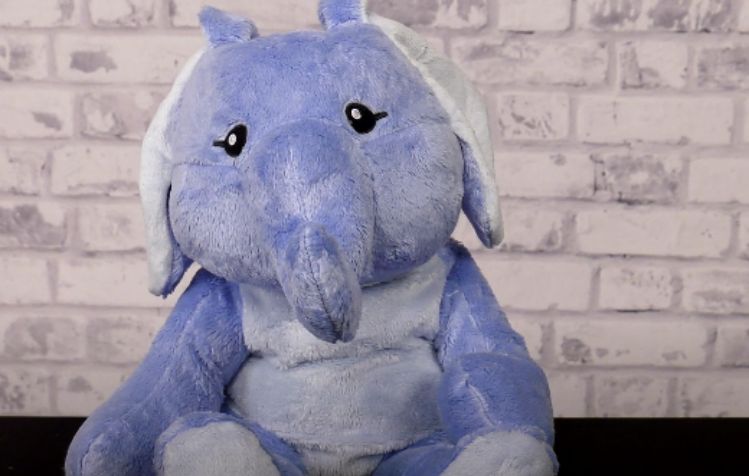Are you looking for a new and unique project? Why not try making a weighted stuffed animal? This is a great project for all ages and can be customized, depending on the user.
Our team researched and compiled ways to show you how to make a weighted stuffed animal using simple materials.
We will also provide valuable tips on choosing the right stuffing.
Start rolling up your sleeves and get ready to create something special.
7 Easy Steps To Make A Weighted Stuffed Animal
1. Gather The Materials Needed

First, gather all the materials you will need. Prepare a piece of fabric for the animal’s body and a small amount of weighted material for the stuffing.
A sewing kit or machine will also be necessary for assembly.
2. Remove The Original Stuffing

To do this, carefully remove the original stuffing from the animal’s body. Make sure not to damage any seams or fabric in the process.
Once the original stuffing has been removed, you can replace it with your chosen weighting material. Alternatively, you can simply place a bean bag inside.
3. Sew Bean Bags (Optional)

Sew two pieces of fabric together to create the bean bag. You can use any durable fabric to hold the filler material in place but soft enough, so your stuffed animal isn’t too heavy.
After sewing the fabric together, turn it inside out, and you can now fill it with filler material. Find out how to make your stuffed animals soft again here.
4. Choose The Best Weighted Stuffing Material

Polyester
Polyester is a durable synthetic fabric that is easy to care for. It is also resistant to wrinkles and stretching, keeping stuffed toys looking new for longer.
Plastic
Plastic pellets are much heavier than polyester and are less likely to shift around inside the toy, so they can help to keep the toy looking full and plump.
Hemp
Hemp is a sustainable and environmentally friendly option and is hypoallergenic and durable. In addition, hemp is naturally temperature-regulating.
Wool
Wool is popular for stuffed toys because it is soft, durable, and hypoallergenic. It is more durable and breathable than polyester.
Leather
Leather is a more expensive option, but it is also more durable. However, it may not be suited for anyone with allergies.
Foam
Foam is polyester-based and is available in a variety of densities. It can be easily shaped and cut to size.
5. Fill It With Weighted Materials

Once you have chosen the fabric and weighting material, it is time to begin stuffing the animal. Start by filling the body with stuffing and then add the weighted material.
Ensure that the weighted material is evenly distributed throughout the animal, so your stuffed animal is properly balanced.
6. Sew Up The Seams

A needle, thread, or sewing machine should be used for this step [1].
Make sure that all the seams are securely shut so that none of the weighting material can be seen from outside of the stuffed toy. Test the toy to ensure it is not too heavy. Check out the most popular weighted stuffed animals here.
7. Hug & Enjoy The Weighted Stuffy
Once the stitches are closed up, you can give your special one-of-a-kind weighted stuffed animal as a gift or keep it for yourself.
Your weighted stuffed animal is now complete and ready for cuddles.
FAQs
Are weighted stuffed animals safe for kids?
Yes, weighted stuffed animals are safe for kids [2]. When choosing a weighted stuffed animal, it’s important to ensure that it is made with quality materials and properly constructed.
If you’re using a weighted stuffed animal to help your child calm down or fall asleep, make sure you talk to your pediatrician first to ensure it’s child friendly.
How heavy should a weighted stuffed animal be for adults?
There is no specific answer to this question, as it will vary depending on the person’s weight and size.
However, a good general rule of thumb is to seek out weighted stuffed animals that weigh about 10% of the person’s body weight.
How do you clean a weighted stuffed animal?
To clean and wash a weighted stuffed animal, remove the stuffing first, then wash the toy’s exterior in a washing machine on a gentle cycle. You can also hand wash it using a mild detergent.
If the toy has any removable parts, be sure to wash those separately. Once the toy is clean, allow it to air dry before putting the stuffing back in and closing.
Sew, Stuff, & Hug!
Weighted stuffed animals are all the rage right now, for good reasons.
These can provide a sense of calm and grounding for children (and adults) during times of stress or anxiety [2]. Plus, they’re just plain adorable.
Suppose you don’t have time to make your own - fret not. Toynk has a great selection of weighted stuffed animals that will definitely please everyone on your gift list this year.
Shop The Plush Toys Collection Now
References:
- https://www.instructables.com/Basic-Sewing-By-Hand-Tutorial/
- https://www.cnet.com/health/mental/3-reasons-why-you-should-use-a-weighted-stuffed-animal-for-anxiety/



